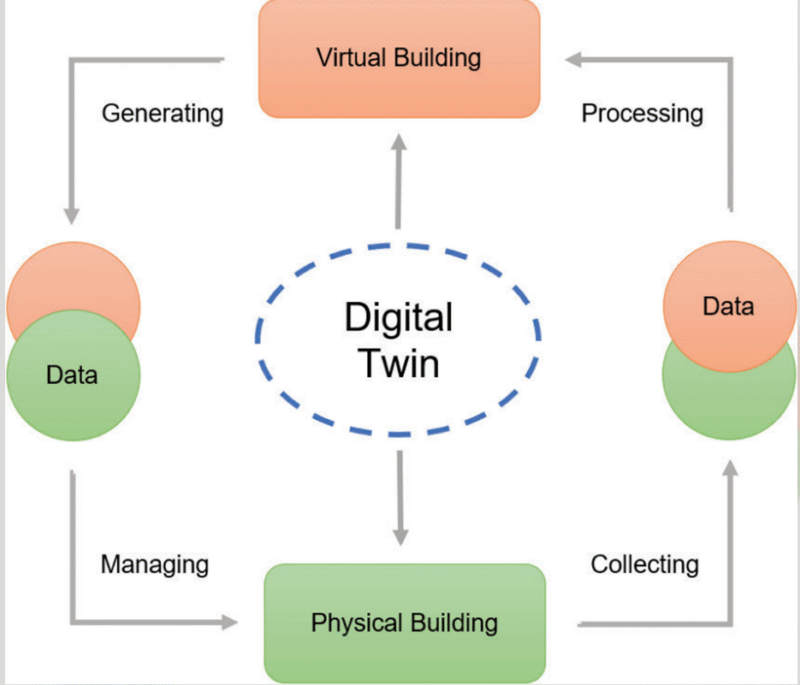Last updated on August 9th, 2025 at 10:24 am
“Digital twin.” That’s a phrase you probably hear in the technology world, but what exactly are digital twins? Consider them a virtual doppelgänger of the physical world, only much smarter and far more helpful.
Table of Contents
So What Are Digital Twins?
Imagine this: you replicate any real world object, a jet engine, a building, and even entire cities into a digital copy that updates in real-time. That’s what digital twins are.
These are advanced virtual replicas that generate simulations, predictions and optimizations of their physical counterparts throughout their entire lifecycle while utilizing live data from sensors, IoT devices, and even analytics. Instead of relying on magicians and their mystical nonsense, backed by data is the way to go.
From NASA to Your Neighborhood
NASA is a good example to start the history. Their early concepts for digital twins stem from Apollo missions in the 1960s, where they used physical duplicates for spacecraft simulations. But the real game-changer is owed to Dr. Micheal Grieves, who in 2002, digitally introduced them at the University of Michigan.
In today’s world, things are looking like they are going to improve quickly. The entire global digital twin market is expected to increase from €16.55 billion in 2025 to €242.11 billion by 2032. This increase is massive as it demonstrates a compound annual growth rate of 39.8%. Pretty amazing for virtual copies of things.
Geographic Areas Using Digital Twins For Productivity

Exceeding Expectations in Manufacturing
In companies like Siemens, they are experiencing an increase in performance. The Amberg Electronics Plant is receiving 30% increases in manufacturing flexibility, 20% productivity increases, and even 40% better space efficiency. Digital twins are also utilized at General Electric to track fleets of jet engines. This implementation has decreased responsive maintenance by 40% as well as improved the uptime of the engines.
Functional Smart Cities
The implementation of urban digital twins is changing the efficiency of urban metropolitan areas and cities. Cities are expected to improve urban planning development as it may lead to €259.26 billion in savings by 2030. In the meantime, Chattanooga Tennessee has utilized digital twins that are pulled from 500 data sources to improve the accuracy of the traffic flow analysis by 30%.
Revolution in the healthcare industry
Personalized medicine and clinical research is experiencing a significant transformation with the introduction of digital twin technologies, these modifications are called medical digital twins. These systems are capable of generating virtual patient models for the development of drugs, optimizing clinical trials, and planning personalized treatments, therefore precision healthcare is a reality.
The Reality Check: It’s Not All Smooth Sailing
Let’s get one thing straight: digital twins don’t come ready to use out of the box. Inaccurate data undermines the twinning procedure, which, in fact, is the most significant hurdle in implementation. Quite the paradox, unaligned data logistics becomes complicated, because accuracy, reliability, and collateral data has to be unison sourced which is managed in a multi-tiered framework.
IT framework considerations of a firm increases the complexity of implementation for the digital twin, and most companies operating within this niche tend to underestimate the work needed. Some of the firms expect to be operating in a cost-effective, low-cost region, tend to be the ones that get hit the hardest with the discrepancy in expectation and reality. It’s no wonder why only 46% organizations measure returns in digital twins – and those that do, 92% outsmart the assumed returns of 10% after investment.
What’s Coming Next
The digital twin is now self-observing and self-optimizing with the latest use of AI, which is a prime example of an autonomous digital twin. 75% of larger firms have AI investment focused in digital twin flexibility which comes with unlimited potential, proving that the future is indeed limitless and digital twins without a doubt, pioneering.
Social networking in the digital twin world is showcased in the IoFDT, or the Internet of Federated Digital Twins. In this new interconnected web, various virtual models work together and collaborate, boosting the productivity intelligence of a digital device.
The Bottom Line
Digital twins are reshaping the world as we know it. They are redefining the notion of ‘buzz tech’ when the forecasting of the future allows for accuracy in serving 20-30% reduced costs while simultaneously forecasting 50-80% reduced delays, in predictive maintenance.
It doesn’t matter if you are trying to excel in manufacturing, healthcare, urban planning, or simply looking to outpace your competition in technology, understanding what digital twins are and their functionality is a necessity, as it could provide you a strategic advantage.
Let’s take a look at how digital twins could become a gamechanger for your industry. The virtual revolution is here, and the evidence of its success is already remarkable.
I’m a technology writer with a passion for AI and digital marketing. I create engaging and useful content that bridges the gap between complex technology concepts and digital technologies. My writing makes the process easy and curious. and encourage participation I continue to research innovation and technology. Let’s connect and talk technology! LinkedIn for more insights and collaboration opportunities:
